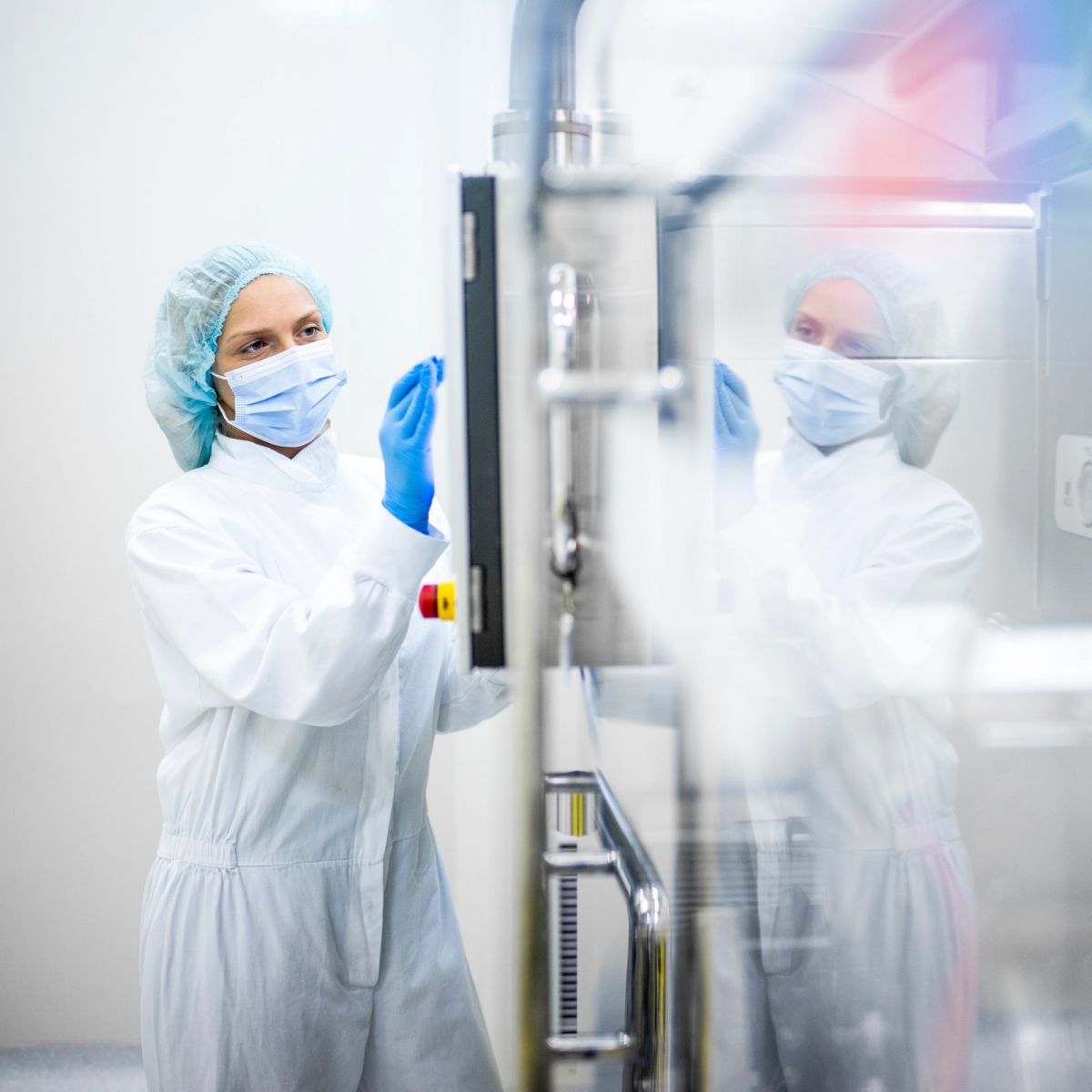1. Leveraging big data to shift from reactive to proactive practices
With 38% of global pharmaceutical companies expecting the greatest technology impact to come from Big Data, analytics is expected to play a huge role in transforming overall operations going ahead. According to the ISPE’s Pharma 4.0 maturity model, the final goal of digitization is smart pharmaceutical manufacturing – in other words, drug production facilities that respond to real-time stimuli and initiate the necessary actions to circumvent undesired results. For instance, while using energy-efficient motors and optimized compressed air systems definitely helps reduce energy consumption, proactively optimizing system design and operations based on changing manufacturing conditions (such as regulating laboratory ventilation) can lead to far higher energy savings. Similarly, production processes can also be fine-tuned to reflect similar results.
Pharmaceutical companies the world over are now shifting their focus from how much to produce to how to produce, simply by listening to their machines. By analyzing the data generated by their machines, they can identify new ways to reduce day-to-day energy consumption, leading to a much leaner and more agile way of working.
2. Adoption of Automation, AI & Machine Learning
With pharmaceutical manufacturing already having advanced significantly following the adoption of sophisticated robotic technologies and artificial intelligence, machine downtime and wastage are already on the decline. Often, pharma manufacturers prefer rewinding or repairing motors over replacing them, leading to much higher energy consumption – in many cases higher than the cost of a new motor in itself. Unless such patterns are monitored, manufacturers have no way of finding out where they’re headed in terms of energy consumption and costs. Thus, such automated, real-time flagging of problems aids timely damage control, which is indispensable to preventing potential product damage and ensuing repercussions such as costly shutdowns, product recalls, or equipment replacement.
For instance, AI can monitor ambient manufacturing conditions 24×7, and identify the slightest of changes in temperature, air quality, etc. as soon as it has happened – thus helping ensure sterile conditions round the clock and minimizing production losses. It can even monitor the efficiency of motors, which form a crucial component of several lab assets (such as centrifuges, reactors, and vacuum dryers).
3. Regulatory Compliance
A single violation found during a routine factory inspection could cost you pharma setups about $10 million. A warning letter can set them back by about $200 million. A settlement could go north of $1 billion.
The pharmaceutical industry, which is one of the most regulated industries in existence, has to ensure compliance not just with manufacturing standards but also with environmental guidelines to be able to survive and overcome intense market pressures and competition. Yet, figuring out how to reduce energy consumption, costs, and consequences is only part of the massive puzzle that’s already reached crisis proportions. What’s more challenging is figuring out how to repeat and sustain this “miracle” – creating a circular process of sorts.
For instance, over 60% of the thermal energy used in process heating is in the form of steam. However, improving steam generation as well as usage (optimizing) can save a lot of energy. In fact, fuel and steam conservation opportunities alone offer the potential for multiple system improvements, which can collectively yield savings of up to 10–15%, generally in a project payback period of under two years – all for just monitoring steam traps to check if they are functioning properly.
Thus, there’s a burning need to monitor operational systems 24×7, that too, automatically so that there are minimal disruptions or human errors. This data needs to be monitored in real time to inform intelligent decisions, and the decisions, too, need to be fed back into the system to enable even smarter decisions in the future, creating a constant loop of sustainability.
4. Reduction of Carbon Footprint and Energy Consumption
Manufacturing a medicinal product is largely an extremely energy-intensive process – particularly during the conversion stage, when natural substances are converted into pharmaceutical substances. In fact, the impact of improving a pharmaceutical production facility’s building infrastructure, such as lighting and ventilation, is marginal compared to the impact of reducing the energy consumed in the facility during chemical synthesis, extraction, fermentation, etc.
Gaining a holistic view of operations, their conditions, and their energy consumption by monitoring HVACs, motors and drives, vacuum pumps, fans, spray systems, pressure regulators, drain taps, cooling towers, compressors, temperature and pressure gauges, dryers, blowers, separators (the list is endless) can massively reduce your carbon footprint.
5. Integrated Optimisation Systems
Depending on their location, pharma manufacturing setups and buildings are subject to varied, perhaps even severe weather conditions. This creates additional pressure on them to monitor and control the ambient conditions throughout their facilities, while at the same time ensuring a comfortable environment for the inhabitants within the premises – which is a challenge all in itself.
Thus, it makes much more sense to have an integrated system that monitors everything that needs to be monitored. A seamlessly integrated, end-to-end energy management system that offers complete visibility into all your assets can help you arrive at practical solutions to the complicated challenges facing many pharma setups today. Moreover, linking energy management with automation, besides offering complete transparency into operational and overall facility-wide efficiency, allows you to visualize energy data, making it unbelievably easy to identify patterns, group data sets in a variety of ways, and cross-reference individual points for a granular understanding of operations.
6. Focus on Top-line Growth and Savings
Like in any other industry, controlling cost is becoming an increasingly critical factor in determining the feasibility of pharma manufacturing. Since improving energy efficiency plays a big part in reducing them, it also plays a central role in driving top line growth and savings. However, for energy efficiency to be effective, it needs to be driven by strong internal changes in terms of organizational culture that reflect a desire to act on environmental issues.
Many pharmaceuticals are therefore distilling environmental goals from the executive level down to the execution level, and outlining specific objectives for energy projects . Thus, COOs, project managers, and production personnel alike are beginning to attach as much priority to energy efficiency as they do to GMP, production costs, and project timelines.
The question is, how do you crunch and rationalise data at scale to generate the insights you need to be able to affect this change? Here are 5 ways to create insights from your energy data management in CoolPlanetOS.





